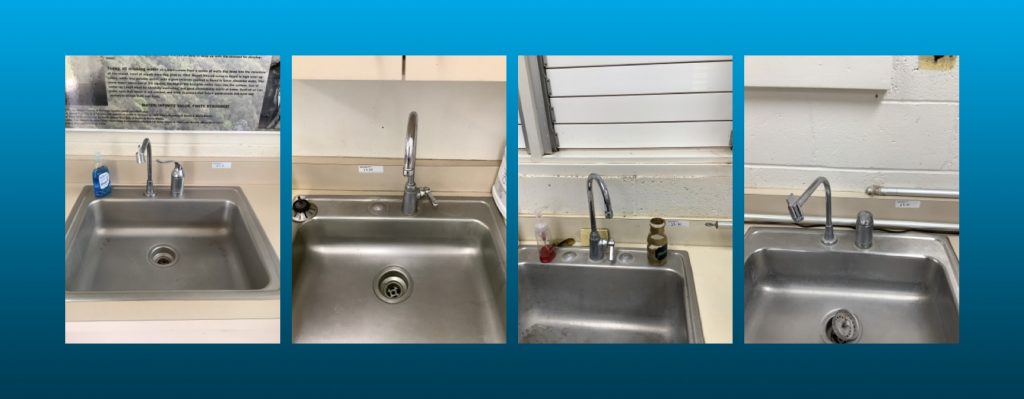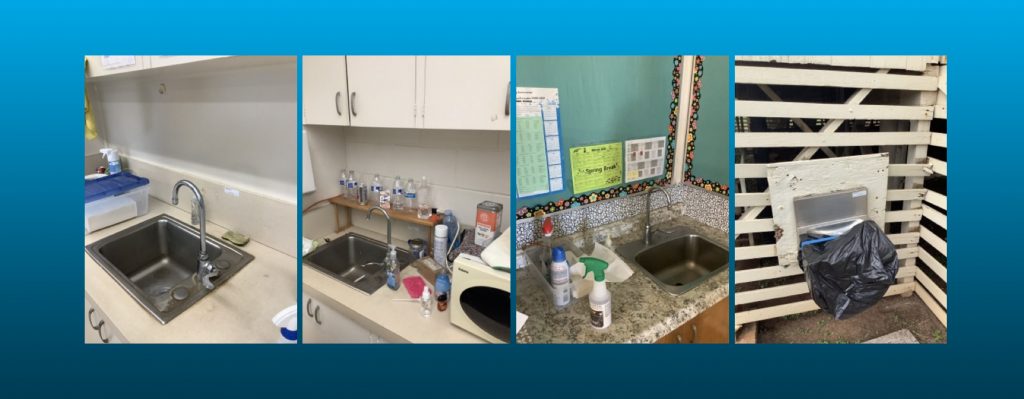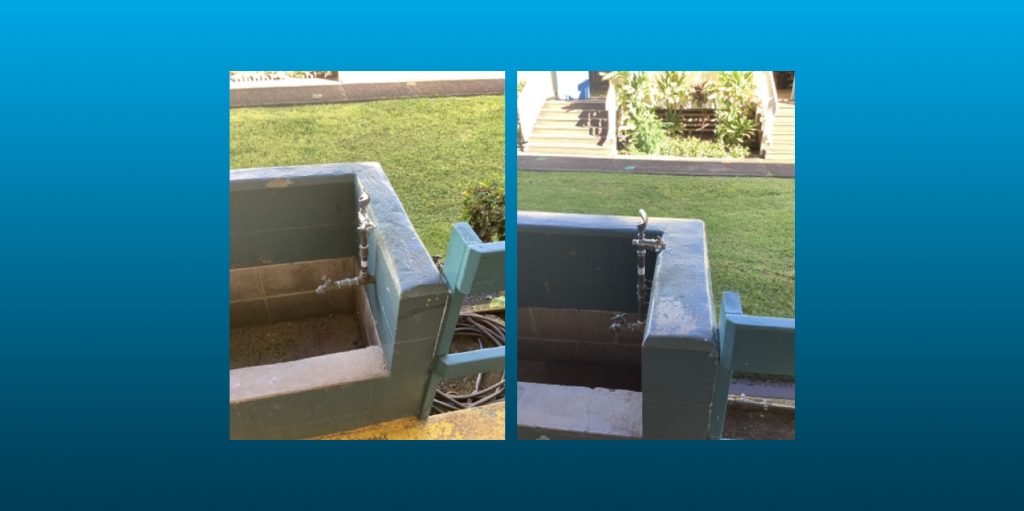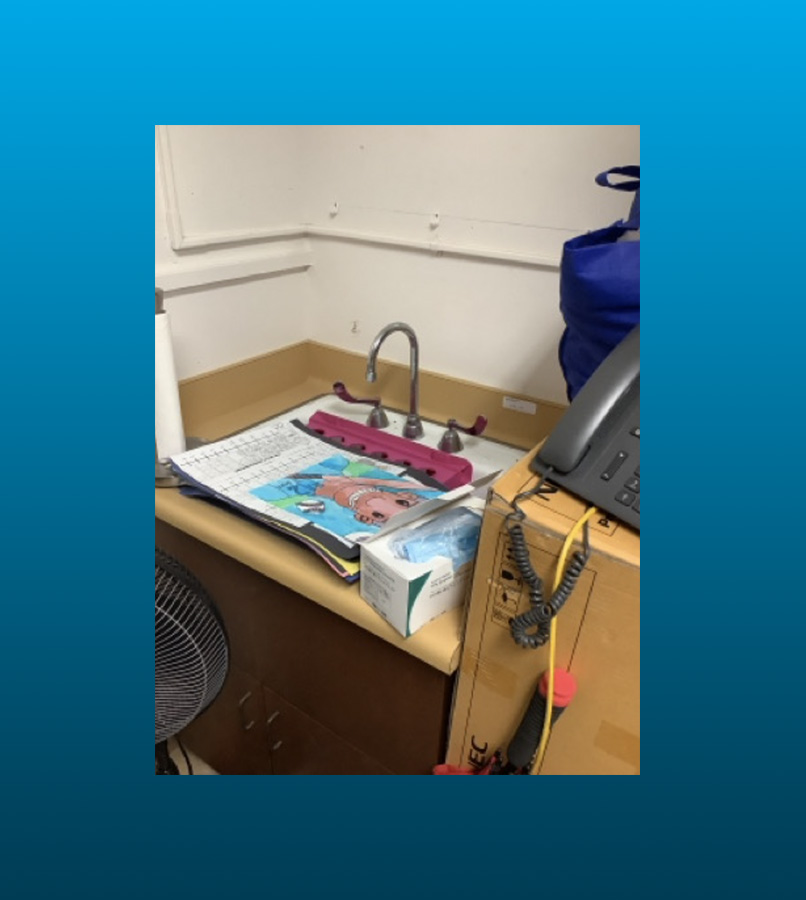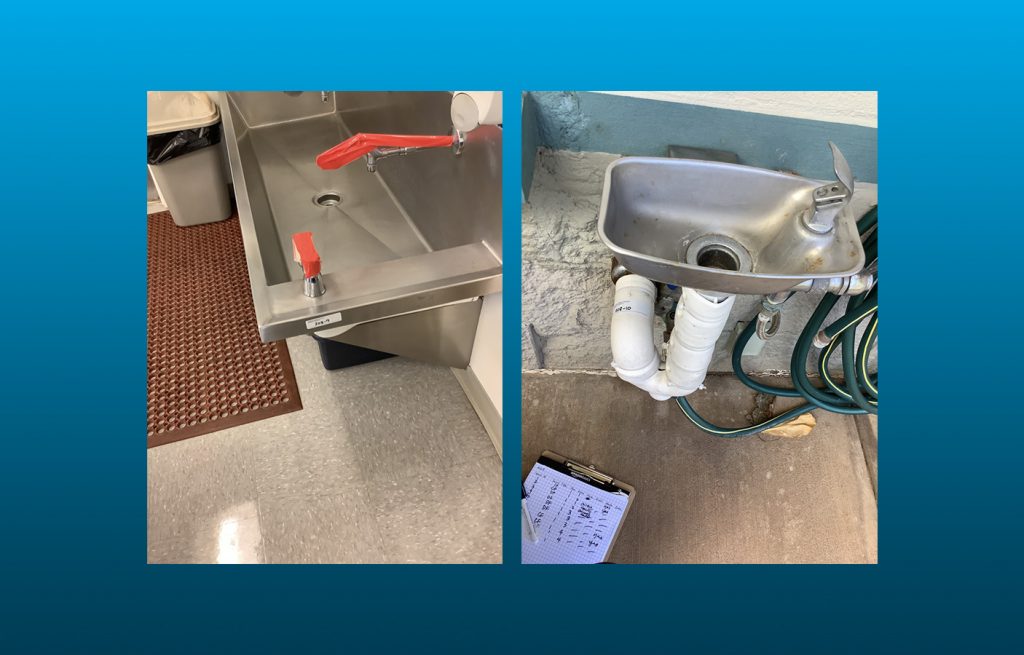Study Finds Lead in Water from 37 Fixtures at 12 Maui County Public Schools
In Maui County, 37 fixtures at 12 public schools, and two fixtures at a single childcare facility, were identified as having levels above the 15 parts per billion threshold for lead concentration in water. Water from those sources are no longer being used while ongoing monitoring and testing is conducted.
The highest level was found at a single faucet located at Kilohana Elementary School on Molokaʻi, where tests showed elevated lead levels at 559 ppb, well above the 15 ppb threshold for action to be taken to block off and restrict use of the fixture until the issue is corrected. The findings were compiled in a report released today by the state Department of Health.

Three other fixtures at schools in Maui County had lead levels in the hundreds of parts per billion: a drinking fountain at Haʻikū Elementary School, Room E104, Floor 1 had levels of 301 ppb; a concession faucet at Hāna High & Elementary School, had levels of 120 ppb; and a drinking fountain at Kaunakakai Elementary School (room B108) on Molokaʻi, which had lead levels of 125 ppb.

Elevated results in Maui County, at or above the 15 ppb threshold include the following:
- 2 sites at Haʻikū Elementary (19 ppb and 301 ppb).
- 7 sites at Hāna High & Elementary (31 ppb, 20 ppb, 15 ppb, 16 ppb, 120 ppb, 19 ppb, and 20 ppb).
- 4 sites at Kahului Elementary (16 ppb, 23 ppb, 21 ppb, 74 ppb).
- 1 site at Kaunakakai Elementary (125 ppb).
- 4 sites at Kīhei Elementary (60 ppb, 21 ppb, 21 ppb, and 18 ppb).
- 2 sites at Kilohana Elementary (569 ppb and 22 ppb).
- 4 sites at Lānaʻi High & Elementary (23 ppb, 17 ppb, 34 ppb, and 72 ppb).
- 4 sites at Lihikai Elementary (16 ppb, 15 ppb, 32 ppb, and 50 ppb).
- 2 sites at Makawao Elementary (26 ppb, and 25 ppb).
- 1 site at Pāʻia Elementary (20 ppb).
- 3 sites at Pukalani Elementary (30 ppb, 34 ppb, and 77 ppb).
- 3 sites at Wailuku Elementary (67 ppb, 17 ppb, and 16 ppb).
- 2 sites at a single childcare facility on Maui – Kamehameha Preschool Paukukalo (38 ppb and 55 ppb).
Complete results are available on the WIIN project website at http://health.hawaii.gov/wiin/.
“The schools and child care facilities were notified immediately upon the receipt of the results and those water sources are no longer in use. We would like to assure the community that taps that had elevated levels of lead will not be used for drinking or food preparation until the problem is fixed,” said Michael Miyahira, Acting Branch Chief of DOH’s Safe Drinking Water Branch.
The samples were taken during a recent study conducted by the state Department of Health. According to the department, about 4% of the water samples collected from faucets and drinking fountains at selected Hawai‘i public schools and child care facilities show elevated concentrations of lead. Comparable studies conducted on the mainland had rates of about 5% to 6%, according to health officials.
The project launch was announced earlier this year as part of an effort to ensure the water at Hawai‘i public schools and child care facilities is safe to drink.
Schools and child care facilities were selected for the tests based on the age of the buildings, the children who are served at the schools, whether they have had their drinking water tested in the past, and other factors.
Participating schools in Maui County included: Haʻikū Elementary, Kahului Elementary, Kīhei Elementary, Lihikai Elementary, Makawao Elementary, Pāʻia Elementary, Waiheʻe Elementary, Wailuku Elementary, Pukalani Elementary, Hāna High and Elementary, Kaunakakai Elementary, Kilohana Elementary, Lānaʻi High and Elementary and Maunaloa Elementary.
An application was submitted to the Environmental Protection Agency for additional funding to test the remaining 73 DOE elementary schools and 30 public charter schools in phase 2 of the project which is expected to begin in Summer 2022.
Additional Details Courtesy: Hawaiʻi Department of Health
ARTICLE CONTINUES BELOW ADThe Hawai‘i State Department of Education, Department of Health, and Department of Human Services launched the first phase of the joint project in February 2021 to test drinking water sources for the presence of lead.
Department officials say the project is part of a nationwide program established under the Water Infrastructure Improvements for the Nation Act of 2016 to test drinking water sources for lead from the faucets of classroom sinks and kitchen sinks as well as drinking fountains in schools and child care centers.
To date, 58 schools and 70 child care facilities in three counties–Hawaiʻi, Maui and Kauaʻi–has been completed. Testing on Oʻahu began in mid-July and results will be available on a rolling basis.
Department officials say 93 of the 2,232 sampled taps at schools show elevated concentrations of lead above the project action level of 15 ppb. Four of the 100 sampled taps at child care facilities had results above the action level.
“Initial results indicate that the fixtures (faucets) are the problem in most cases, but follow-up testing is occurring to define if the problem is the individual fixture or the premise plumbing behind the wall,” according to a department press release.
ARTICLE CONTINUES BELOW AD“It is important to note that any positive results do not mean there is lead in the water being provided to the school or child care facility from the public water supply departments,” said Michael Miyahira, Acting Branch Chief of DOH’s Safe Drinking Water Branch. “Historically, our regulated water systems in Hawai‘i have not had lead contamination and our initial findings continue to support this.”
The DOE is creating a plan for replacement of affected fixtures or evaluation of the plumbing of schools where results showed elevated levels of lead.
“Our keiki are at the highest risk for health effects from lead exposure so this joint effort is important to ensure young students, teachers and parents can have peace of mind knowing their drinking water is safe,” said State Toxicologist Dr. Diana Felton. “Identifying the sites where lead is above the action level is the first step to minimizing children’s exposure to lead. We appreciate the teamwork of DOE, DHS, DOH and our sampling contractor, TruePani Inc., for taking on this massive project to improve the health of Hawaiʻi’s keiki.”
ARTICLE CONTINUES BELOW ADARTICLE CONTINUES BELOW ADThis current project will test 106 DOE elementary schools and 123 DHS licensed child care facilities, which were selected based on criteria established by the Environmental Protection Agency.
The department notes that the majority of childhood lead exposures in Hawaiʻi happen in the home, usually from deteriorated lead-based paint, the smelting of lead fishing sinkers, or lead contaminated soil. However, it is possible that repeated drinking of water containing lead can contribute to a child’s lead exposure.
More information on childhood lead exposure can be found on the website of the Hawaiʻi Childhood Lead Poisoning Prevention Program https://lead.hawaii.gov. Parents who are concerned about lead exposure in their child from any source should talk to their child’s doctor about lead testing.








